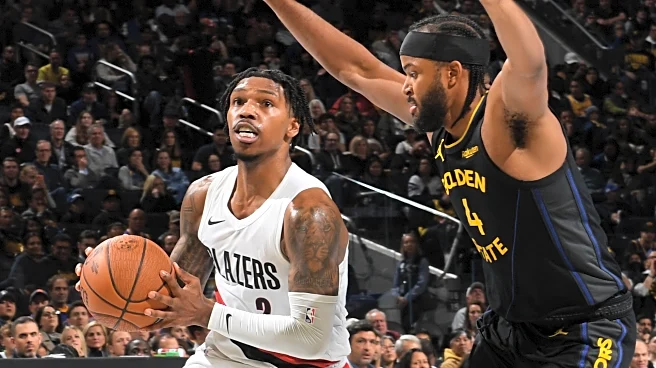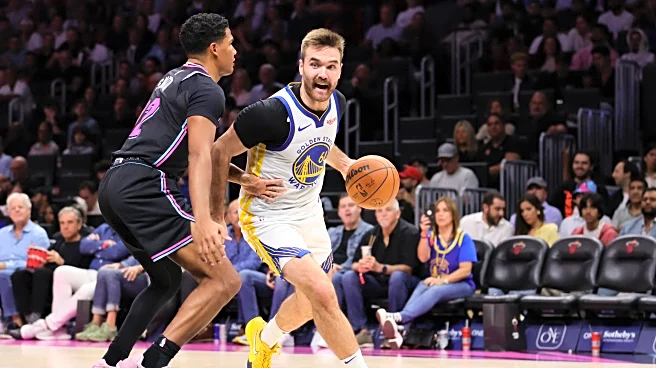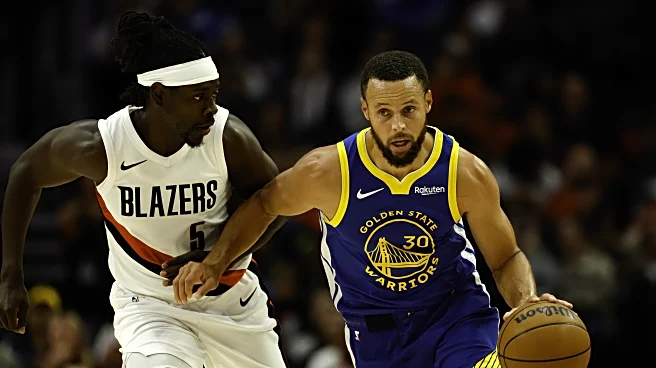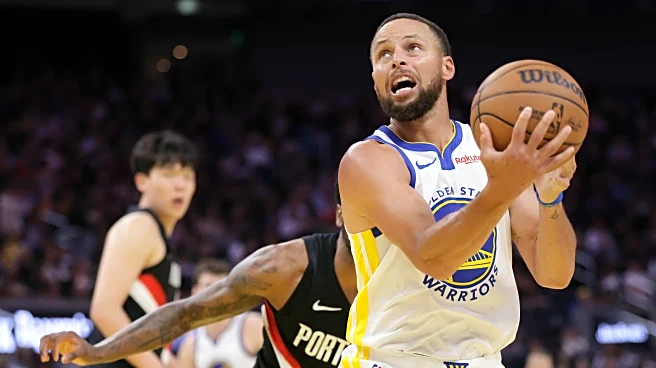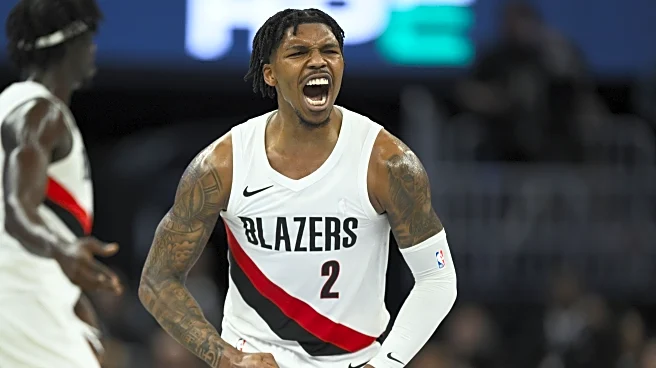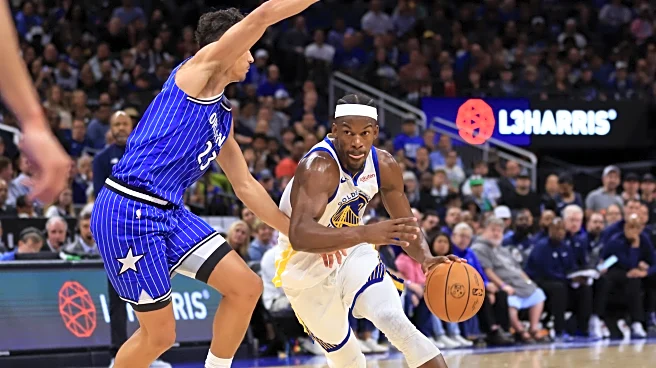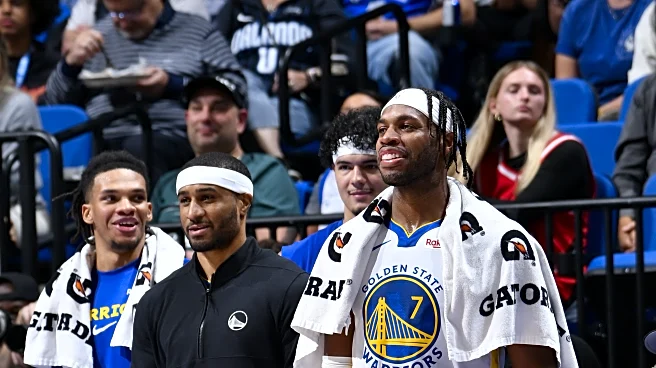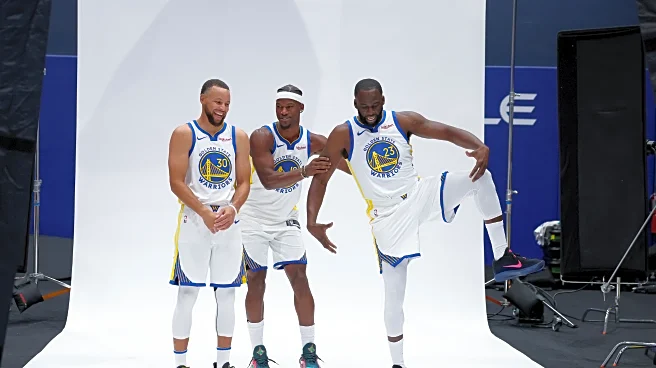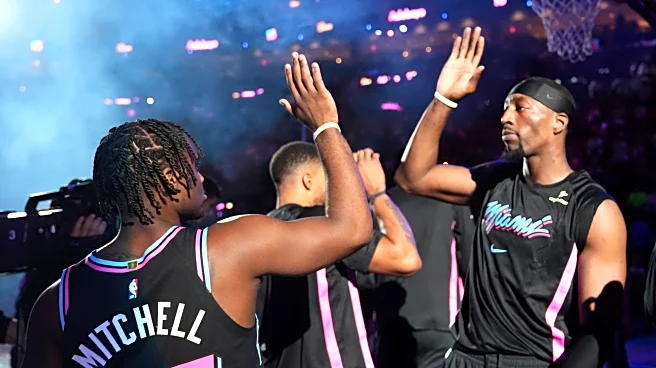After the Golden State Warriors’ 123-127 loss to the Portland Trail Blazers — one that virtually eliminated them from NBA Cup contention (if you care about that sort of thing) — Jimmy Butler gave his view
on what caused the Warriors to lose the game, one that they, at a certain point, led by 11 points.
“We’re just not guarding nobody,” Butler said. “From what I can tell — I haven’t been here long — but that’s never been the formula here. I’m always optimistic. But I’m also honest.”
The Warriors’ loss tonight was fueled by a couple of factors. The Warriors overwhelmingly lost the rebounding battle by a whopping 24 rebounds (38-62). The Blazers hauled in 21 offensive boards, translating into them rebounding 50% of their misses, an offensive rebounding rate that is situated in the 99th percentile of the league, per Cleaning The Glass. Portland’s 53.8 points per 100 missed shots/free-throws is in the 98th percentile. Their abundance of athleticism and length shined a light on the Warriors’ lack of them, a deficiency that did them in despite Steph Curry scoring 38 points on 81% True Shooting (the Warriors, by the way, are 3-3 this season when Curry scores 30 or more points).
On the other hand, Butler, in several ways, is correct in his assessment above. The Warriors did not guard sufficiently on a level that would be considered winning basketball, let alone contending basketball. A huge part of the Warriors not being able to defend well: having a sub-par offense.
“I think overall our defense has been pretty good actually,” Steve Kerr said after the game. “I’m not worried about our defense. I’m more worried about our offense right now. Not a whole lot of rhythm. Not a lot of flow.”
In non-garbage time this season, the Warriors’ 113.5 points per 100 possessions ranks 22nd; in the half-court, their 98.3 points per 100 half-court possessions ranks 12th. The formula is rather simple: the more you score, the more you are able to dictate matchups on defense while having the luxury of setting up your defensive infrastructure.
Which is why, after a possession in which the Warriors fail to score, Butler — who, ironically, made the assessment of the Warriors “not being able to guard nobody” above — is caught with his pants down, proverbially speaking:

Granted, Butler was guarding Caleb Love — heading into tonight, a 20% shooter from beyond the arc (6-of-30). But also, Butler, while going under the screens, did not make much effort to at least make a soft recovery and soft contest on the undrafted rookie, who had a career night: 26 points on 6-of-14 shooting on threes.
Whenever the Warriors fail to score, the fact that opponents make it a point to run and gain an advantage in transition is more pronounced, much more when that team happens to be younger, faster, and more athletic than they are (which, in their case, is on an almost game-to-game basis). Having to scramble back translates to cross matches and, even worse, one or two defenders finding themselves with no matchup at all, which causes the entire infrastructure to fall apart quickly:

Point-of-attack defense has been a much-talked-about concern with the Warriors’ defense. There’s a delicate balance when it comes to staying in front of your own man: How much of it should be a matter of “being better” as opposed to selectively letting your man through by design?
That was certainly the dilemma on a few possessions involving Moses Moody as the point-of-attack man. I would categorize the possession below as belonging to the former category, in that Moody should’ve been much better in keeping his man in front. As a result, Quinten Post has to step up and help, with Draymond Green having to sink in against Robert Williams III to help Post (i.e., “helping the helper).

However, the fact that Green has to help toward the dunker spot leaves Toumani Camara open on the wing, having shaken (i.e., lifted) up to create a longer close-out distance for Green:

Also take note of where the drive occurs: down the middle of the lane, where it makes it extremely difficult to send help against drives, with close-outs becoming much longer for defenders to make. Contrast the possession above with a drive back in the first half, in which Buddy Hield “weaks” his defender along the sideline and toward Post in drop coverage:

“Letting through” the defender above certainly falls under the by-design category, but it works because the drive occurs on one side of the floor, with the sideline as an additional inanimate defender. In contrast, when “weaking” someone toward their non-dominant hand occurs down the middle of the floor, it defeats the purpose of “weak” coverage in the first place, in that it is part of the “no-middle” philosophy of defense. What is the point, then, if Deni Avdija is weaked toward his left hand if he’s already driving down the middle?
The simple answer is that there is no point whatsoever — not when help isn’t in a position to rotate on time, given the difficulty of help coming from either side if the drive occurs down the middle:

There are a couple of methods through which middle drives can be stifled other than “weaking” or “icing” someone toward the sideline or baseline. Gap help (it’s various forms including stunting at the “nail” to slow dribble penetration, or full-on “next” switching which is a degree more aggressive than stunting) is one way of doing so, but it comes at considerable risk. The gap helper has to help off of his own man; even a momentary help-off is enough for several NBA players to punish, either by catch-and-shooting the ball or cutting along the slot.
When the Warriors foil an attempt by Avdija to force a switch onto Curry, watch how the Blazers simply get the ball back to Avdija when Curry has to take him on anyway. (By the way, why did Payton stroll away from Avdija after Curry hedges out, leaving Curry to have to guard Avdija anyway — defeating the purpose of the hedge, which is to not have Curry switched onto Avdija?). Avdija immediately drives against Curry down the middle. Gary Payton II deems it necessary to help Curry by stunting at the nail, leaving Love open on the wing:

Possessions in which the Blazers were able to drive in the paint and score up close, draw fouls, kick out to shooters on the perimeter against a tilted defense, or an unholy combination of any of the above were the untimely foils for this Warriors defense tonight. In the end, their failure to cross their t’s and dot their i’s in that regard — along with how disadvantaged they were athletically and physically, resulting in a rebounding deficit that also ties in with how difficult of a time they had on defense — was too glaring of a shortcoming that became an obstacle in their attempt to come back (in a game that probably shouldn’t have been one they had to rally from a deficit).
